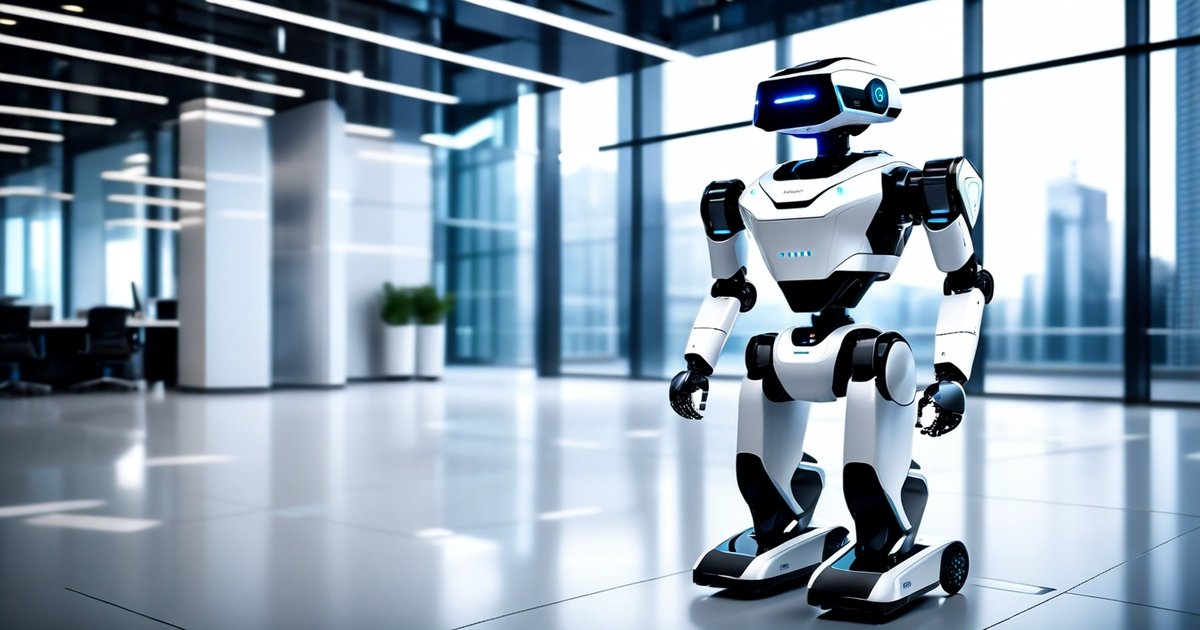Security robots, video surveillance, and autonomous vehicles are revolutionizing the way businesses safeguard their premises. These advanced security machines provide round-the-clock surveillance, threat detection, and immediate response capabilities.
From patrolling large industrial facilities to monitoring restricted areas, security robots offer unparalleled vigilance and deterrence against unauthorized access and potential security breaches. Equipped with cutting-edge technologies such as AI-powered analytics and thermal imaging, these robots can identify anomalies and respond swiftly to mitigate risks.
We will explore how these autonomous sentinels and video surveillance contribute to cost-effective security solutions while reducing human intervention in high-risk environments.
Security Robots Capabilities
Autonomous Patrol
Security robots play a pivotal role in autonomously patrolling designated areas, reducing the need for constant human intervention. Equipped with advanced sensors and video, these robots efficiently navigate obstacles during patrols and respond promptly to potential security threats. For instance, security officers can cover large areas consistently, enhancing overall surveillance effectiveness.
By incorporating autonomous patrol capabilities into their operations, organizations can significantly bolster their security measures while optimizing resource allocation. This technology not only minimizes human risk exposure in potentially hazardous or remote locations but also ensures continuous surveillance without requiring human presence at all times.
Furthermore, the deployment of security robots with autonomous patrol features demonstrates a commitment to leveraging cutting-edge technology for enhanced safety across diverse environments.
Thermal Surveillance
The integration of thermal surveillance capabilities into security robots empowers them to detect heat signatures in various environmental conditions. This enhancement enables the detection of intruders or anomalies that are not visible to the naked eye and provides reliable surveillance even in low-light environments.
These advanced thermal imaging technologies allow for effective monitoring of large outdoor areas day and night based on heat signatures. For example, by utilizing thermal surveillance, robots can identify and track individuals or objects based on their heat signatures – a feature that greatly contributes to efficient threat assessment within facilities or areas.
Incorporating thermal surveillance into security robot systems enhances overall security by enabling them to provide round-the-clock monitoring under various environmental conditions effectively.
Face Recognition
Equipping security robots with face recognition technology allows them to enhance access control measures within facilities or specific areas. Advanced algorithms empower these robots to accurately recognize faces from various angles and distances – an essential capability for efficient monitoring and threat assessment purposes.
Moreover, integrating face recognition technology into security robot systems assists in identifying persons of interest or potential security risks, contributing significantly towards proactive threat mitigation strategies within different settings.
This feature enables these robotic solutions to identify authorized personnel swiftly while flagging unauthorized individuals effectively.

Enhancing Safety with Robots
Security robots play a crucial role in fortifying safety measures through various advanced functionalities, contributing to the modernization of security practices across different industries. These robots are designed to enhance safety and efficiency by leveraging cutting-edge technologies and innovative features.
One essential aspect where robot security significantly impacts safety is their ability to implement advanced perimeter upgrades. By integrating state-of-the-art sensors, these robots strengthen threat detection and response capabilities, thereby deterring unauthorized access and potential breaches. For example, they can proactively monitor facility perimeters, contributing to the comprehensive protection of assets and facilities.
Another key feature that contributes to the overall safety and efficiency of robot security is their utilization of cloud data storage. This enables seamless access to real-time surveillance footage and critical operational data while ensuring secure archiving and retrieval of surveillance information. Organizations can centralize surveillance data from multiple robot security for centralized analysis, empowering informed decision-making.
Moreover, automatic charging capabilities further enhance the safety and efficiency of robot security by enabling them to autonomously recharge when battery levels are low. This ensures continuous operation while optimizing uptime by proactively managing power requirements. Seamless integration with automatic charging systems minimizes downtime, maximizing fleet efficiency.
Operational Management
Fleet Management
It is essential to have a centralized system for monitoring and controlling the entire fleet. This involves tracking each robot's location, status, and performance in real time. By implementing a centralized dashboard, security personnel can efficiently oversee the deployment of robots across various locations. For instance, if there is an incident at one site, the nearest available robot can be redirected to provide immediate support.
Furthermore, maintenance scheduling plays a crucial role in fleet management. Regular maintenance tasks such as battery checks, software updates, and physical inspections need to be organized systematically. By creating automated alerts for scheduled maintenance based on individual robot usage and environmental conditions, potential issues can be identified proactively.
In addition to this proactive approach towards maintenance scheduling, having spare units ready for quick deployment is also vital for uninterrupted security operations. This ensures that even if a robot requires extensive repairs or servicing due to unforeseen circumstances or damages during duty hours, there are backup units available without disrupting overall security measures.
Moreover, analyzing historical data from the fleet's performance provides valuable insights into optimizing operational efficiency. By studying patterns such as peak activity times or areas with frequent incidents requiring intervention by robotics security helps in strategic resource allocation and planning preventive measures.
Custom Solutions
Customizing security robots according to specific requirements enables organizations to address unique challenges effectively while maximizing their capabilities. Tailoring features such as sensor configurations based on environmental conditions ensures optimal performance in diverse settings like warehouses with low light levels or outdoor patrolling during varying weather conditions.
Additionally, custom solutions include integrating specialized tools onto the robots for niche applications such as hazardous material detection sensors for industrial facilities or thermal imaging cameras for nocturnal surveillance purposes. These customizations enhance the versatility of robotics security by expanding their utility beyond standard surveillance functions.
Another aspect of custom solutions involves developing personalized communication protocols between the robots and existing security infrastructure within an organization's premises. Seamless integration with access control systems or alarm systems allows swift coordination between human personnel and robotic assets during emergencies or suspicious activities.
Moreover, customized software interfaces tailored specifically for different user roles within an organization facilitate ease of use and efficient interaction with the deployed security robots. For example, supervisors may require advanced analytics dashboards displaying comprehensive data metrics while frontline officers might benefit from simplified interfaces focused on real-time alerts and navigation controls.
Swarm Intelligence
Implementing swarm intelligence techniques empowers groups of security robots to collaborate seamlessly towards common objectives while adapting dynamically to evolving situations. This collective behavior amplifies their effectiveness in handling complex scenarios that surpass the capabilities of individual robots. Swarm intelligence enables robots to pool their sensory inputs and share critical information instantaneously across the network.
This collaborative exchange of data enhances situational awareness and decision-making abilities, resulting in coordinated responses with centralized control. One benefit of swarm intelligence is to address scalability issues by enabling robots to self-organize and cooperatively cover larger areas with minimal human intervention.
For example, in a highly dynamic environment such as a massive event or public gathering, a cluster of robots can autonomously adapt their patrol routes based on real-time movement patterns and situational changes.
Furthermore, the adaptive nature of swarm intelligence means robustness against individual failures or obstacles. While an individual robot might get disabled or an obstacle may block its path, the overall mission continues as the other units adjust their behavior accordingly to fill the gap and reestablish seamless coverage.
Business Trends in Security
Robot Security Leasing
Leasing security robots can be a cost-effective solution for businesses looking to enhance their security measures without the upfront investment of purchasing. By opting for robot leasing, companies can access cutting-edge security technology without significant capital outlay. This allows businesses to allocate their financial resources to other critical areas while benefiting from state-of-the-art robotic security solutions.
One of the key advantages of leasing security robots is the flexibility it offers. Businesses have the option to upgrade or change their robotic security systems as technology advances, ensuring that they always have access to the latest and most effective solutions. Leasing often includes maintenance and support services, relieving businesses of the burden of technical upkeep and troubleshooting.
Furthermore, by choosing robot leasing, organizations can adapt quickly to changes in their security needs. For instance, during periods of heightened security threats or increased surveillance requirements, businesses can easily scale up their robotic fleet by adding more leased units.
Conversely, if there's a temporary decrease in demand for robotic security services due to seasonal factors or business fluctuations, companies can adjust their lease agreements accordingly.
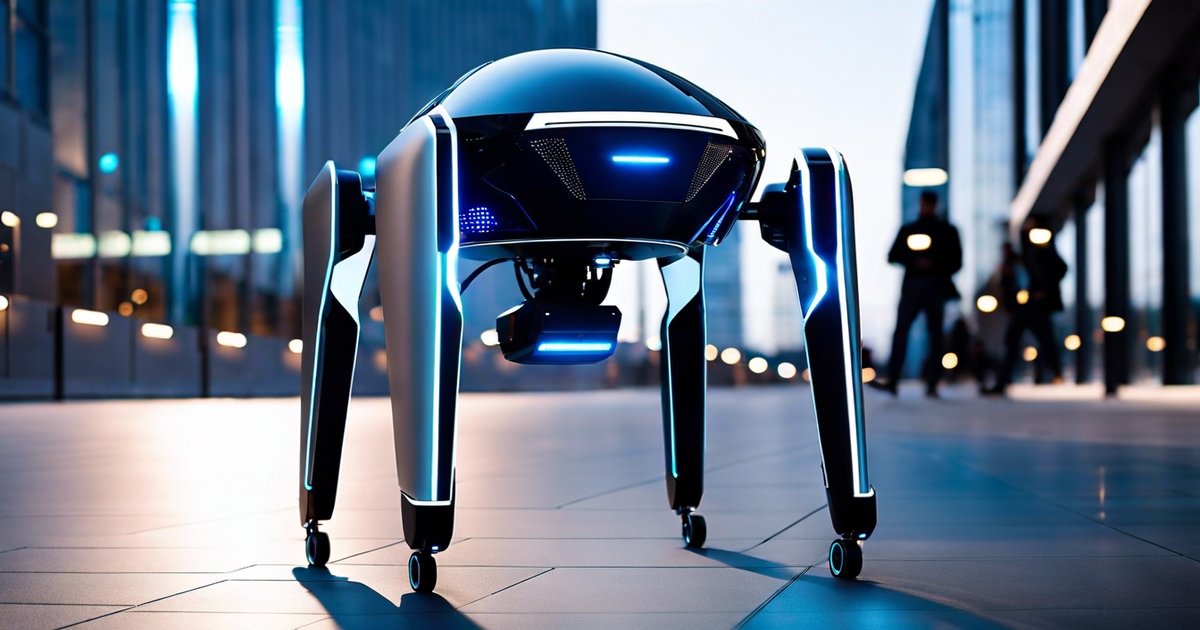
Service Provision
The service provision model for robot security encompasses a range of offerings designed to meet diverse business needs. Companies providing these services offer comprehensive packages that may include round-the-clock monitoring and surveillance by trained personnel who remotely operate the robots' functions when necessary.
For example, Knightscope is an American security camera and robotics company headquartered in Mountain View, California. Knightscope designs builds, and deploys robots called Autonomous Data Robots (ADRs) for use in monitoring people in malls, parking lots, neighborhoods, and other public areas.
Knightscope security robots like the K5 robot are fully autonomous, using self-driving technology, and are designed to alert police and security of incidents through sensors that detect weapons, read license plates, and detect other suspicious activities.
Moreover, some service providers integrate advanced features such as real-time data analysis and reporting into their offerings. This enables businesses to receive actionable insights derived from the information collected by the robots during patrols and surveillance activities.
Another crucial aspect of service provision is customization. Providers work closely with clients to tailor robotic security solutions according to specific industry requirements and operational environments. For example, retail establishments may require different functionalities compared with manufacturing facilities due to distinct risk profiles and operational dynamics.
Technical Servicing
Technical servicing forms an integral part of maintaining optimal performance levels for robot security deployed across various industries. Regular maintenance ensures that these machines continue operating at peak efficiency while minimizing downtime caused by technical issues.
Technical servicing involves software updates and hardware inspections aimed at addressing any potential vulnerabilities or weaknesses in the system's defenses against cyber threats or physical tampering attempts.
Furthermore, technical servicing also encompasses proactive measures such as predictive maintenance based on data analytics gathered from each robot's operational history.This approach helps prevent unexpected breakdowns through preemptive repairs or component replacements before major malfunctions occur.
Robot Features and Applications
Patrol Platforms
Security robots are equipped with various features that make them efficient patrol platforms. These robots can cover large areas, continuously monitoring for any suspicious activities or security breaches. Their ability to navigate different terrains makes them suitable for both indoor and outdoor patrols. For instance, they can be programmed to move through narrow hallways in office buildings or maneuver through rugged terrain on construction sites.
Furthermore, robots security is designed to operate autonomously, requiring minimal human intervention during their patrol duties. They can be programmed to follow predefined routes while avoiding obstacles along the way. This autonomous operation ensures consistent coverage of designated areas without the need for constant human supervision.
Security robots often feature advanced sensor technologies that enable them to detect anomalies such as unauthorized access attempts or unusual environmental conditions like smoke or fire. These sensors provide real-time data to a central monitoring system, allowing security personnel to respond promptly to potential threats.
Camera Systems
One of the key features of robot security is their integrated camera systems, which play a crucial role in surveillance and threat detection. These camera systems are equipped with high-definition cameras capable of capturing clear images and videos in various lighting conditions.
Moreover, some security robots are designed with 360-degree panoramic cameras that provide comprehensive coverage of their surroundings. This wide field of view allows the robot to capture detailed footage across large areas without blind spots.
These camera systems often include night vision capabilities, enabling robots to continue surveillance operations even in low-light environments or during nighttime patrols. The combination of high-quality imaging and night vision technology enhances the effectiveness of robot security in maintaining continuous vigilance over secured premises.
Autonomous Pathing
Another essential feature found in many security robots is autonomous pathing technology. Through sophisticated algorithms and mapping capabilities, these robots can navigate complex environments independently while adhering to predetermined patrol routes.
For example:
- A security robot patrolling a warehouse facility utilizes its autonomous patching
capabilities to efficiently cover every section of the warehouse floor without missing any areas.
In an outdoor setting such as a parking lot or perimeter fence line, a security robot's autonomous pathing ensures thorough coverage while adapting its route based on changing environmental factors such as weather conditions or temporary obstructions.
Autonomous pathing also enables seamless coordination between multiple robots, allowing them to collaborate effectively when patrolling extensive facilities or working together during emergency response scenarios.
Technological Integration
LIDAR Technology
Security robots are often equipped with advanced technologies to enhance their capabilities. One such technology is LIDAR, which stands for Light Detection and Ranging. LIDAR allows the robot to measure distances by illuminating the target with laser light and measuring the reflection with a sensor. This enables security robots to create detailed maps of their surroundings, detect obstacles, and navigate complex environments with precision.
The integration of LIDAR technology in robot security offers several advantages. Firstly, it provides accurate 3D mapping of the environment, allowing the robot to identify potential threats or intrusions more effectively. LIDAR enables robots to operate autonomously in various lighting conditions, including low-light environments where traditional cameras may struggle to capture clear images. Furthermore, this technology enhances the robot's ability to avoid collisions and navigate through crowded spaces while patrolling an area.
In practical terms,
Security companies can deploy autonomous security robots equipped with LIDAR technology for round-the-clock surveillance without human intervention.
In industrial settings, such as warehouses or manufacturing facilities, these robots can efficiently monitor large areas and alert human operators in case of any anomalies detected using real-time data from LIDAR sensors.
The combination of LIDAR technology with other sensors like cameras and motion detectors significantly improves a security robot's situational awareness and threat detection capabilities.
GPS Systems
Another essential technological integration in modern security robots is the Global Positioning System (GPS). By incorporating GPS systems into their design, these robots are capable of accurately determining their location within an environment at any given time. This feature is particularly valuable for outdoor patrols or large-scale premises where precise navigation is crucial.
The utilization of GPS systems empowers robot security with geofencing capabilities — creating virtual boundaries within which they are programmed to operate. When a robot equipped with GPS detects unauthorized movement beyond these predefined boundaries, it triggers alerts or takes specific actions according to its programming.
Moreover,
Security personnel can remotely track the movements of multiple patrol robots simultaneously using GPS coordinates displayed on a centralized monitoring system.
In emergencies where immediate response is required at a certain location within a facility or campus grounds, GPS-enabled security robots can swiftly navigate toward the designated area based on real-time instructions received from control centers.
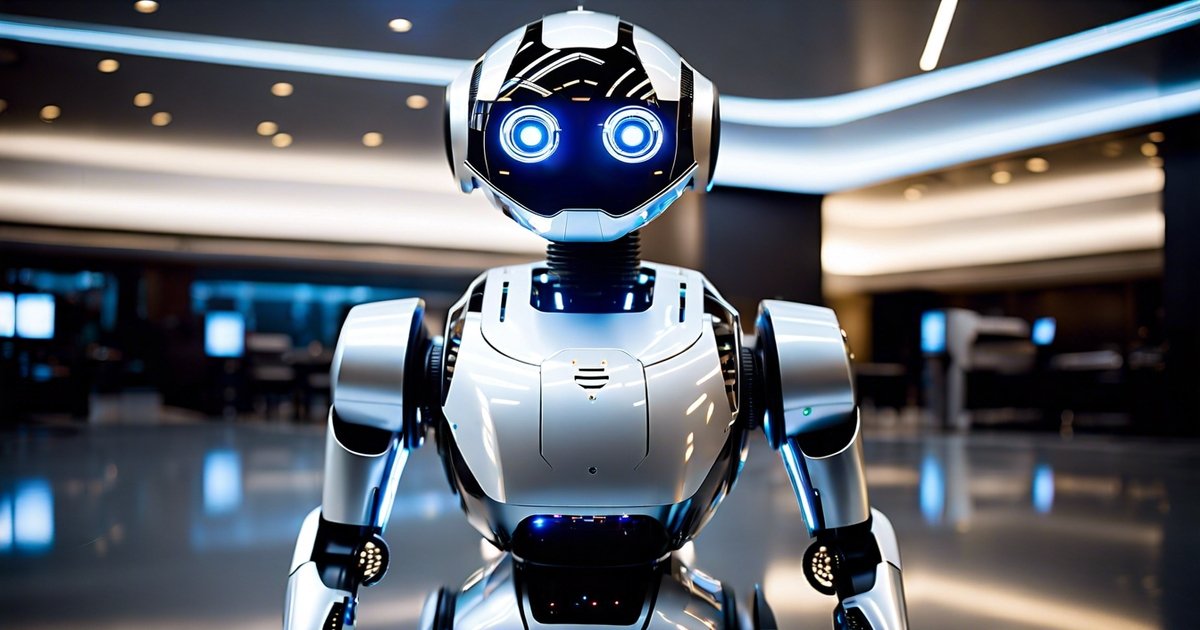
Control Mechanisms
Efficient control mechanisms play a pivotal role in ensuring that robot security function seamlessly within diverse operational scenarios. These mechanisms encompass both hardware interfaces and software platforms that enable human operators to supervise and manage multiple aspects of a robot's operations remotely.
For instance,
Physical controls integrated into some models allow manual override functions when necessary—enabling onsite personnel to take direct command over the movements or actions performed by a robot.
Remote access via secure networks facilitates real-time monitoring along with task assignment modifications based on evolving situational requirements.
Centralized management dashboards provide comprehensive insights into each deployed robot's status updates regarding battery levels, maintenance needs,
By integrating robust control mechanisms,
Organizations benefit from increased operational efficiency while maintaining stringent oversight over their robotic fleet’s activities.
The seamless interaction between humans supervising from remote locations ensures timely responses during critical incidents encountered by patrol bots out in the field.
Recognition and Surveillance
Object Identification
Security robots are equipped with advanced surveillance technology that enables them to accurately identify objects in their surroundings. Using state-of-the-art sensors and cameras, these robots can detect and classify various objects, including unauthorized items or potential security threats. For instance, in a crowded airport terminal, a security robot can swiftly scan the area and identify any unattended baggage, prompting further investigation by human security personnel. This capability significantly enhances the overall security measures by providing real-time object identification and alerting the relevant authorities when necessary.
The ability of robot security to perform object identification tasks is not limited to stationary environments. These versatile machines can navigate through complex spaces such as warehouses or industrial facilities while continuously scanning for anomalies or safety hazards. By leveraging artificial intelligence algorithms, they can differentiate between normal operational equipment and irregular objects that may pose risks to the facility's security or operations. As a result, companies benefit from an added layer of protection against potential intrusions or accidents within their premises.
Moreover, object identification extends beyond physical items; it also encompasses recognizing individuals based on predetermined criteria such as facial features or access credentials. In high-security areas like government buildings or data centers, security robots play a pivotal role in verifying authorized personnel's identities before granting them entry. By integrating biometric recognition technologies into their systems, these robots effectively manage access control procedures while maintaining stringent security protocols.
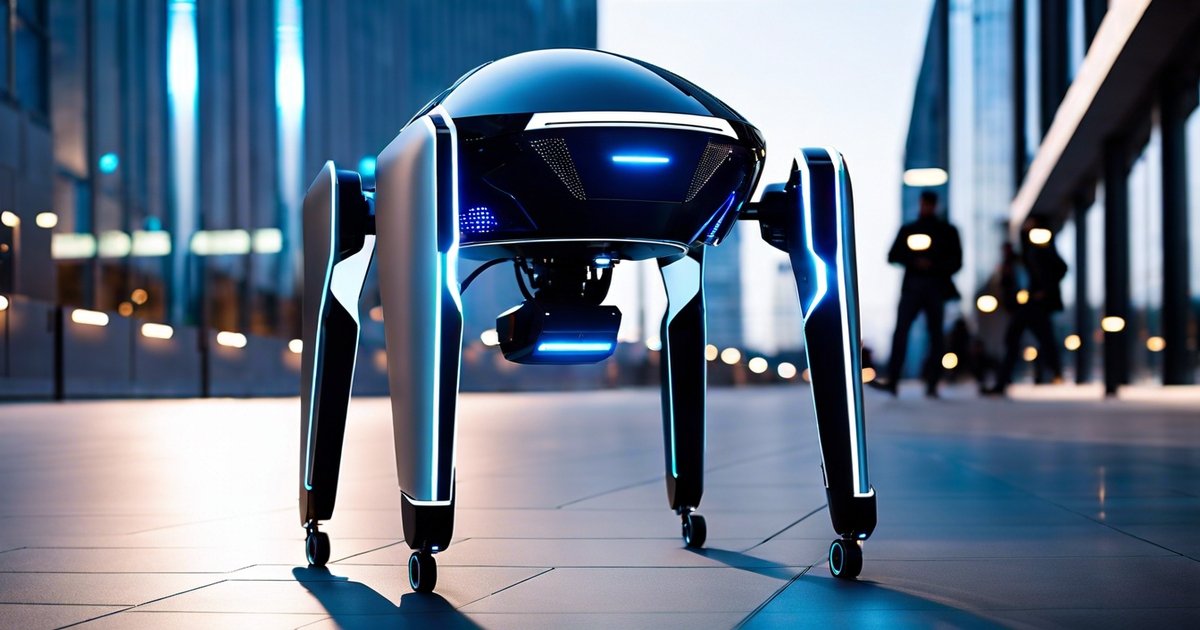
Access Control
Incorporating cutting-edge technological advancements into their design allows security robots to execute robust access control measures across diverse environments. Whether deployed in corporate offices or public venues, these autonomous sentinels contribute significantly to regulating entry points and monitoring restricted areas without human intervention. Through seamless integration with existing infrastructure like electronic door systems or turnstiles, they enforce access policies meticulously while recording comprehensive logs of all ingress and egress activities.
Furthermore, the implementation of intelligent access control solutions empowers organizations to customize authorization levels for different personnel categories seamlessly. Security administrators have the flexibility to define specific clearance parameters within designated time frames using centralized management platforms connected to the robotic units' operating systems directly.
By combining sophisticated surveillance capabilities with precise object identification techniques, security robots emerge as indispensable assets for safeguarding various environments against potential threats while streamlining access control processes efficiently.
Infrastructure for Robots
Charging Stations
Security robots require charging stations to ensure they have enough power to operate effectively. These stations are strategically placed within the facility and provide a convenient location for the robot to recharge its batteries. The charging stations typically consist of a docking station where the robot can connect and replenish its power supply.
These stations are essential components of the security robot infrastructure as they enable continuous operation without interruption due to low battery levels. Without reliable charging stations, security robots may experience downtime, leaving areas vulnerable to potential security threats.
In some cases, advanced charging stations can be equipped with autonomous features that allow the robot to navigate and dock itself for recharging without human intervention. This capability enhances operational efficiency by minimizing downtime and ensuring that the security robot remains active at all times.
Shelter Requirements
Apart from charging stations, providing suitable shelter for security robots is crucial in maintaining their optimal functionality. Shelters protect robots from harsh weather conditions such as extreme heat, rain, or snow, which could otherwise impact their performance or cause damage.
The shelter should be designed to accommodate the specific dimensions of the security robot while allowing easy access for maintenance and inspection purposes. It serves as a safe haven where the robot can retreat when not on duty or during adverse weather conditions.
Moreover, shelters also contribute to prolonging the lifespan of robot security by shielding them from environmental elements that could accelerate wear and tear. By having designated shelters strategically positioned across an area under surveillance, organizations can ensure that their security robots remain operational and well-maintained.
Reasons for Robot Utilization
Cost Reduction
Security robots can help in cost reduction by performing tasks that would otherwise require human personnel. For example, a security robot can patrol an area continuously without the need for breaks or shift changes, thus reducing labor costs. These robots are equipped with advanced sensors and cameras that can monitor large areas effectively, minimizing the need for multiple human guards.
Moreover, security robots are designed to be highly efficient and autonomous. They can navigate through predefined routes and perform routine checks without supervision. This level of automation reduces the overall operational costs associated with maintaining security in various environments such as warehouses, industrial facilities, or office buildings.
Furthermore, when considering long-term expenses related to security measures, investing in security robots may prove to be more economical than hiring and training a large team of human guards. These machines have the potential to provide continuous surveillance at a fraction of the cost required to employ full-time personnel.

Minimum Human Role
The utilization of security robots minimizes direct human involvement in potentially hazardous situations. By deploying these machines for surveillance purposes or patrolling high-risk areas like construction sites or remote locations, organizations can reduce the exposure of their employees to dangerous environments.
In addition to reducing risk exposure for humans, security robots also contribute significantly towards improving overall safety levels within different settings. Their ability to detect anomalies and respond promptly helps mitigate potential threats before they escalate into critical situations requiring immediate human intervention.
Moreover, due to advancements in artificial intelligence (AI) and machine learning technologies integrated into these robots' systems,they're capable of making real-time decisions based on predefined parameters, thereby limiting any need for constant oversight by humans during regular operations.
Public Interaction and Safety
Public Response
The use of security robots has been met with a mix of reactions. While some people appreciate the added security presence, others express concerns about privacy invasion or potential job displacement for human security personnel. It's important to consider these responses when implementing security robots in public spaces.
One positive aspect of public response is that many individuals feel safer knowing that there are additional security measures in place. For example, in shopping malls or airports, the sight of a security robot patrolling can provide reassurance to visitors and deter potential criminal activity. However, it's crucial for organizations to address any apprehensions by providing clear information about how the robots operate and emphasizing their role as support for existing security protocols.
On the other hand, some members of the public may have reservations about being monitored by security robots. This concern often revolves around issues related to privacy and surveillance. To alleviate these worries, organizations deploying such technology should prioritize transparency and communication with the public regarding data collection practices and ensure compliance with relevant privacy regulations.
There is also a fear among certain groups that increased reliance on security robots could lead to job losses for human security personnel. Addressing this concern involves highlighting how these machines are meant to complement rather than replace human workers. Emphasizing that humans will still play a vital role in overseeing and interpreting data gathered by the robots can help assuage fears within communities impacted by automation.
Increased Efficiency
The implementation of security robots contributes significantly to increased efficiency within various environments where they are deployed. These devices can perform repetitive tasks consistently without succumbing to fatigue or distraction like humans might experience over time.
One key advantage lies in their ability to continuously monitor an area without breaks or lapses in attention—something that is challenging for human guards working long shifts. This constant vigilance helps prevent unauthorized access or suspicious activities from going unnoticed, thereby enhancing overall safety levels.
Moreover, security robots equipped with advanced sensors and cameras can gather real-time data on environmental conditions (such as temperature changes) or detect anomalies like unattended bags more efficiently than traditional methods alone would allow. This rapid detection capability enables prompt responses from human operators who can then assess situations effectively based on actionable information provided by the robot's surveillance systems.
Furthermore, these machines streamline incident reporting processes through automatic documentation of events captured during patrols—eliminating potential errors associated with manual record-keeping while ensuring accurate records for future reference if needed.
Security Robot Deployment
Industrial Use
Security robots are increasingly being deployed in industrial settings to enhance surveillance and protect valuable assets. These robots can patrol large manufacturing plants, warehouses, and distribution centers to monitor for any unauthorized access or security breaches. Equipped with advanced sensors and cameras, security robots can detect unusual activities and alert human guards promptly. For example, a security robot patrolling a manufacturing plant can identify potential safety hazards such as spills or leaks before they escalate into major accidents.
In addition to surveillance tasks, security robots also contribute to the overall efficiency of industrial operations. They can be programmed to conduct routine inspections of equipment and infrastructure, ensuring that everything is in proper working condition. By automating these repetitive tasks, companies can free up human resources for more complex responsibilities while maintaining a high level of security within their facilities.
Another benefit of deploying security robots in industrial environments is their ability to provide real-time data on environmental conditions such as temperature, humidity, and air quality. This information is crucial for ensuring optimal working conditions for both employees and machinery within the facility.
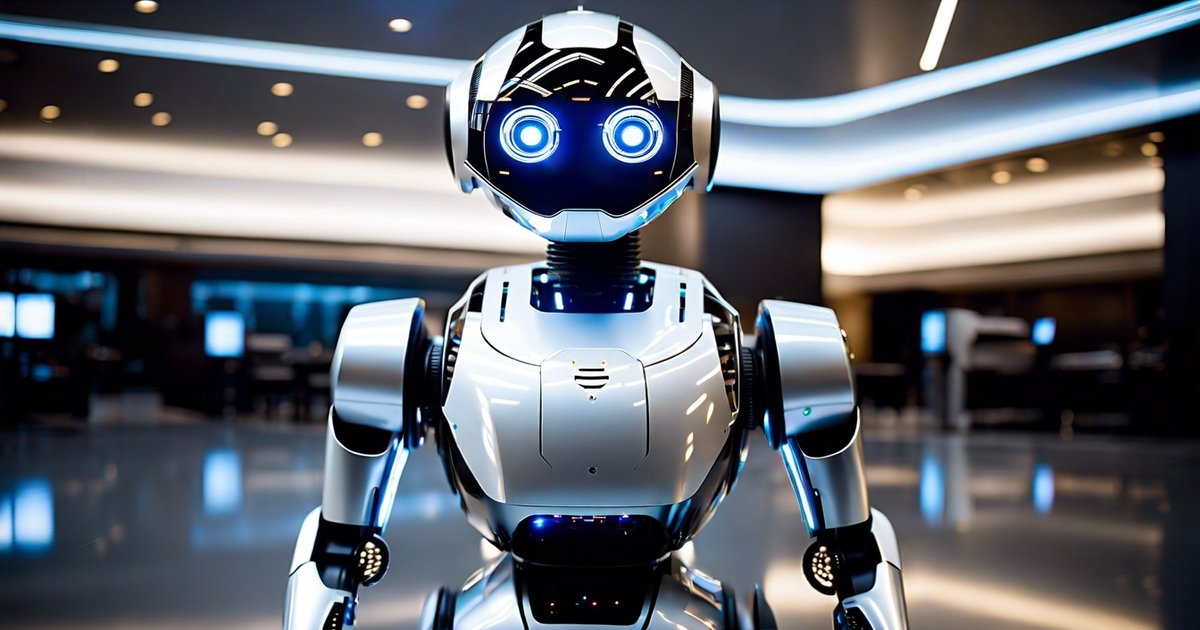
Commercial Use
In commercial settings such as shopping malls, airports, and office buildings, security robots play a vital role in enhancing public safety by providing constant monitoring and surveillance capabilities. These robots are equipped with features like facial recognition technology which enables them to identify individuals who may pose a threat based on predetermined criteria set by the authorities.
Moreover, security robots offer an added layer of protection against theft or vandalism by patrolling designated areas during off-hours when human presence may be limited. Their continuous presence serves as a deterrent against criminal activities, contributing to overall crime prevention within commercial establishments.
Furthermore, these robots can assist visitors with directions or basic inquiries, enhancing customer service while simultaneously performing their primary function of maintaining security.
Utility Facilities
Utility facilities such as power plants, water treatment plants, and oil refineries benefit from the deployment of security robots due to their ability to navigate through challenging terrains without compromising efficiency. These facilities often span large areas with various hazardous zones that require constant monitoring. Security robot's rugged design allows them to operate seamlessly in harsh environments where human patrols might be impractical or risky.
Additionally, the use of drones integrated with security robot systems provides an aerial view of utility facilities that were previously unattainable. This enhanced perspective allows operators to quickly respond to potential threats or emergencies across vast areas.
By incorporating security robotics into these critical infrastructures, organizations ensure comprehensive surveillance coverage while minimizing operational risks associated with manual patrols.
Knightscope K5 Security Robot Pros and Cons
Pros:
– Autonomous navigation: Knightscope K5 is equipped with multiple sensors, including LIDAR, cameras, and microphones that enable it to navigate a given environment, avoid obstacles, and report anomalies in real-time.
– Interactive user interface: Knightscope K5 comes with a touchscreen interface that allows users to report incidents, request assistance, and access various security features.
– Advanced threat detection: The Knightscope K5 robot can detect and analyze threats, including suspicious people, backpacks, and vehicles, and escalate alerts to law enforcement officers or other security personnel.
– Cost-effective alternative to human security patrols: Using Knightscope security K5 robots can be more cost-effective than maintaining a dedicated team of security personnel since they don't require salaries, health benefits, or other expenses that typical employees incur over time.
Cons:
– Limited application: The Knightscope K5 is not useful in all environments, such as those with high steps or uneven ground, it requires a level and smooth surface for optimal functionality.
– Limited mobility: Knightscope K5 can only move at a maximum speed of three miles per hour and turn at a limited angle; this limited mobility can pose a challenge when trying to track and apprehend a suspect.
– Privacy concerns: The cameras and microphones on the Knightscope may raise privacy concerns among visitors since their actions are constantly monitored.
Comparisons and Competing Companies:
Several other security robot companies are competing with Knightscope K5, including Cobalt Robotics and Omron Adept. Cobalt Robotics offers a human assistance function which is a helpful feature that Knightscope K5 lacks. Omron Adept offers the ability for autonomous drones to operate the K5 robot to improve mobility and the detection of additional hazards that the K5 cannot detect.
Summary
The integration of security robots offers a multifaceted approach to advancing safety measures, operational management, and public interaction within various business sectors. By enhancing surveillance capabilities and leveraging cutting-edge technologies, these robots provide a proactive stance against potential security threats.
The deployment of security robots not only strengthens infrastructure but also aligns with evolving business trends, demonstrating a commitment to comprehensive security solutions.
As businesses continue to prioritize safety and operational efficiency, the utilization of security robots presents a compelling opportunity to bolster their security measures. Embracing technological advancements in this realm can lead to improved threat recognition, streamlined operational management, and enhanced public safety.
Moving forward, exploring the diverse applications and features of security robots can empower businesses to make informed decisions regarding their implementation, ultimately contributing to a safer and more secure environment for all.

Frequently Asked Questions
What are the key features of security robots?
Security robots typically feature autonomous patrolling, real-time surveillance, intruder detection, and alarm systems. They can be equipped with sensors for environmental monitoring and have the capability to integrate with existing security infrastructure.
How do security robots enhance safety measures?
Security robots contribute to enhanced safety by providing constant surveillance, immediate response to potential threats, and efficient patrolling of designated areas. Their integration with advanced technologies allows for proactive threat detection and rapid incident response.
What are the primary reasons for utilizing security robots in business environments?
Businesses utilize security robots to improve operational efficiency, reduce human error in surveillance tasks, enhance overall security measures through continuous monitoring, and provide a visible deterrent to potential threats or unauthorized activities.
In what ways do security robots interact with the public while ensuring safety?
Security robots facilitate public interaction by offering assistance in emergencies, providing information about their surroundings, and serving as a point of contact for reporting suspicious activities. They operate within predefined parameters to ensure public safety at all times.
How is technological integration leveraged in deploying security robots effectively?
Technological integration enables seamless coordination between security robot systems and existing infrastructure such as access control systems, alarms, video management platforms, and communication networks. This ensures comprehensive coverage and streamlined operations for optimal deployment.
Key Takeaways
Implementing Security Robots: Consider integrating security robots to enhance safety and security measures in various settings.
Strategic Technological Integration: Emphasize the importance of integrating advanced technologies into security systems for more effective surveillance and management.
Adapting to Business Trends: Stay updated with the latest business trends in security to ensure the deployment of the most relevant and efficient security robot solutions.
Maximizing Public Safety: Utilize security robots for public interaction and safety, enhancing the overall security infrastructure.
Utilizing Recognition and Surveillance Features: Leverage the recognition and surveillance capabilities of security robots for comprehensive monitoring and threat detection.
Efficient Operational Management: Streamline operational management by utilizing security robots for tasks such as patrolling, monitoring, and incident response.
Welcome to the Amazing World of Robots! 🙂

